Circumstances of Officers Feloniously Killed: Some Were Ambushed
Circumstances of Officers Feloniously Killed: Some Were Ambushed
By Jerry P. Cooper, Use-Of-Force Trainer / Consultant
On October 18, 2010, the FBI released the 2009 statistics on law enforcement officers killed and assaulted. There were 48 officers feloniously killed last year. These officers were “feloniously killed” in that they were intentionally slain by an assailant. There are the usual circumstances. At the time of assault, these 48 officers were handling prisoners, investigating suspicious persons, performing high-risk entries, answering disturbance calls, performing traffic stops, or arresting suspects. Some were ambushed.
In recent years, I have observed an upward trend in deaths of officers resulting from ambush.
As a use-of-force instructor, I have struggled to make officers aware of the fact that officers are killed every year as a result of ambush situations. Only occasionally do I think I succeed in gaining their attention to this problem. The other predicament I have is coming up with ideas on how to survive under these circumstances.
As I read this latest report, my heart skipped a beat. For the first time that I can recall, more officers died in 2009 from ambush situations than from any other circumstance. Fifteen officers died last year after being ambushed. In fact, twice as many officers died as a result of ambush than from any other circumstance. I read the narrative of each of these incidents. They reveal an interesting story.
The first thing that jumped out at me was the fact that most of the ambushed officers were killed by the assailant shooting them with a rifle. Most officers feloniously killed are shot with handguns. Most of the rifles were semiautomatic, assault-type weapons.
Another interesting fact is that there were three incidents in which multiple officers were killed. This fact certainly helps to explain why the number of officer deaths resulting from ambush was much higher in 2009. In Oklahoma, two officers were killed in a single incident, and in Pennsylvania, three were killed. The most tragic of these incidents occurred in Lakewood, Washington, when four officers were murdered in a coffee shop.
The ages of victim officers ranged from 23 to 45. Their years of experience spanned from one to 26 years. Offender’s ages ranged from 21 to 53.
All but one of the assailants had prior criminal records. Most had previously been involved in violent crimes involving weapons. Most were either drug users or drug dealers. Some had previously assaulted law enforcement officers. Two of the offenders had previously been convicted of murder, including the one who killed four officers in Lakewood, Washington.
Many of them were on probation, parole, or some type of conditional release at the time they ambushed and killed the officers.
As one might expect, some of these murderers had a history of mental problems. At least one was reportedly off his medication at the time of the killing – a theme much too familiar to experienced law enforcement officers.
So, what kind of sense can we make of this? What training do we give law enforcement officers to prepare them for these secret attacks? What laws should be written or changed?
Most officers are shot at a distance of less than 10 feet. Ambushes by their very nature involve officers being shot from greater distances. This certainly helps to explain why ambushed officers are more often than not shot with rifles, as opposed to handguns.
Protective vests seldom adequately protect officers from projectiles fired from rifles. In the 2009 incidents, some of the officers were wearing protective vests at the time of their ambush, but the vests failed to prevent the fatalities. Had these officers been shot with handguns, perhaps many of them would now be reported as “assaulted,” rather than “killed.”
We teach officers to make use of cover in shooting situations, but what cover stops rounds fired from a .280, .30-.30, .223 or 7.62mm rifle? The tree where the officer takes refuge had better be a BIG tree.
Some of these rounds will even penetrate a vehicle’s engine block, what many of us consider as the ultimate cover in most street situations. I instruct officers to close the distance on an assailant who is firing a rifle, rather than trying to create distance.
Most officers train with handguns out to a distance of 25 yards. Closing to within this distance allows the officer’s training to kick-in. When an officer tries to retreat from rifle fire, he or she places themselves in a situation of tactical disadvantage. The assailant can reach out and hit the officer with a round as he or she retreats. At the same time, the officer’s handgun will quickly become less effective when creating distance. (Sorry, Broderick Crawford, but I do not really think you could make those 75-yard between-the-eyes shots with your .38 Chief Special under dynamic conditions.)
An exception to this instruction would be when the officer can quickly and safely move back to better cover. Law Enforcement agencies are increasingly issuing tactical patrol rifles to street officers. This is a great survival weapon for patrol officers. Like cruiser shotguns of past and present, patrol rifles are useful only if the officer has it in his possession. Unless the responding officer possesses criminal activity cues indicating a critical incident is imminent, most patrol officers do not get out of the patrol vehicle with a long-gun in their hand. What would be the response from the general public if this became a standard practice? Should congress revisit the banning of assault weapons for everyone but law enforcement?
I am a big believer in the following survival formula: Time = Cover + Distance + Movement. Most of the time, if an officer can stretch out the time line in a critical incident, the officer is more likely to survive. Ambushes are by their very nature sudden attacks. In ambush situations, therefore, slowing things down becomes a real challenge.
I have already touched on the issue of the officer buying time by creating distance. This is a variable that depends on the environmental conditions of each incident. Movement then, when possible, becomes paramount for officer survival in an ambush situation. In such critical incidents, the officer usually suffers the disadvantage of having to react to the suspect. By moving, especially laterally, the officer becomes the action, and now, the suspect is forced to react to him/her. In ambush situations especially, where the assailant will most likely be using a long gun, a maneuvering officer may cause gun-handling problems for the offender.
All the aforementioned leads me to the topic of most of my sermons involving use-of-force training: an officer should always be looking for cover. Officers must always ask themselves, “Where is my cover?” This concern must be a constant enterprise for officers, even when not responding to a call. Officers will survive a gunfight 95% of the time if they just use cover. Notwithstanding the limitations of use of cover when the assailant has a rifle, I will stick by the idea that cover is an officer’s best friend.
What is to be made of the fact that all but one of the assailants who killed law enforcement officers in ambush situations in 2009 had prior criminal records? What does this say about our judicial system? Are liberal judges who are too soft on violent criminals to blame? What about the judges who are simply extending professional courtesy to defense attorneys, using this practice to mitigate the sentence of a violent criminal? Do you know who these judges are? What about the prosecutors who make deals favorable to the defense over strong objections from law enforcement or families of victims; or even worse, not even advising these parties of deal negations?
Once convicted, why are these violent criminals running around loose? Is anyone supervising these convicted felons? In most states, probation and parole agencies are in shambles. (Once, while investigating a homicide case, I interviewed my suspect’s probation officer, and learned she had “socialized” with the suspect while he was one of her clients. The suspect had already served time in prison from another homicide conviction.) Are you aware that members of parole boards have immunity from lawsuit, even if they flood the street with felons who are known to be violent?
So, what can law enforcement officers do to prepare for ambush situations? I will offer these three suggestions:
1. Train under stress by engaging in scenario training. Training involving Simunitions is probably best. In Simunitions training, officers learn to keep fighting, even after taking rounds themselves. Training with paintball guns may be a possibility, if Simunitions training is not available. Training with a firearms simulator (e.g. FATS or VirTra systems) is credited with saving the lives of officers. Some of the video scenarios depict ambush situations. If agencies cannot afford, or otherwise do not have available to them, such training tools, then they can always use red guns and involve role players in creating stressful scenarios.
2. Officers must mentally prepare for an ambush. They must learn to use positive survival self-talk, especially if they are wounded. There are a lot of great role models out there who have survived critical incidents after suffering major wounds. Blood Lessons: What Cops Learn From Life-Or-Death Encounters, by Charles Remsberg, should be required reading.
3. Officers should take a course in medical self-help. Tactical Combat Casualty Care is a wonderful, potentially life-saving class.
All officers should add a tourniquet to their response gear. There are a number of such devices now available that can be administered with one hand, and therefore, could be used by a wounded officer.
* * *
Jerry Cooper is a law enforcement trainer who has been a continuously sworn law enforcement officer for more than 36 years. The majority of that time was spent with North Carolina Alcohol Law Enforcement (ALE). He currently serves as a reserve officer with the Cleveland, N.C. Police Department. Jerry’s training specialties include Subject Control & Arrest Techniques, FATS (firearms training simulator), and Anti-Terrorism. He earned a B.A. degree from the University of North Carolina at Chapel Hill in Education.
Jerry Cooper is the commander of the Writers’ Police Academy Violent Crimes Task Force, otherwise known as the academy FATS instructor.
*The article above was originally published on The Graveyard Shift in 2011 ~ Jerry Cooper, author

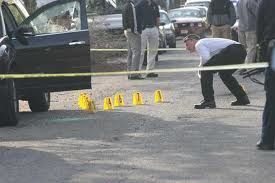

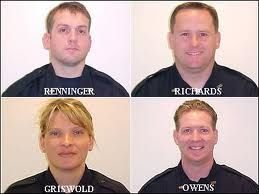

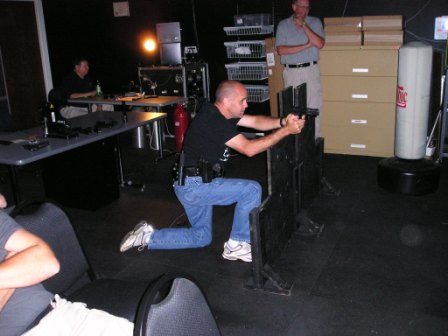
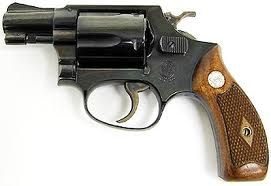
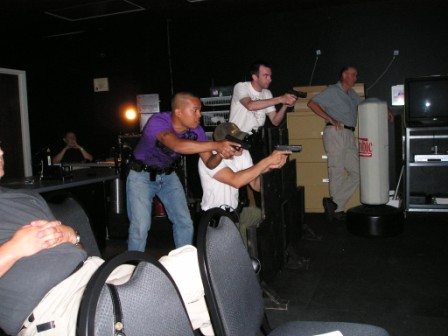
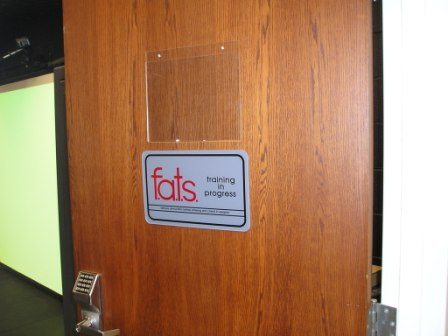


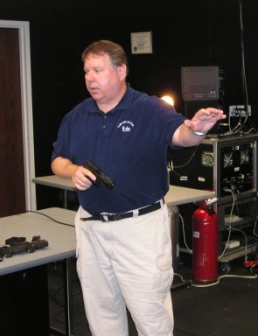



This is certainly a disturbing report that you have shared. I think it is hard for people to stay perpetually on guard mentally and yet more and more that is what they must do.
I hope you already do and even more will stress to all officers that noise disturbances usually accompany other illegal behavior and have felons involved, but the felons doing it are also the ones who listen to the police radio channels and straighten up by the time the officers arrive. Too many young officers seem to think this is all a joke, maybe having been at parties and thinking everything is a simple party. Noise disturbances are an opportunity to study the criminal types IMHO.
IMO, parole boards should NOT have immunity and in my state (at least where they are totally out of control) they should have to live in the neighborhood of those they let out. (The problem parole board is in no way remotely liberal; mostly appointed by an ultra-fascist Southern governor & under his thrall they simply do not care what happens to other humans (is all I can figure from the cases I have analyzed.)
In my town, the current circuit judge seems to let them out any time they are a menace (and only if they are a menace) and the city court judge’s misbehavior (which is rampant carelessness if not crookedness) has actually been noticed by investigators. (On the occasion I observed him he arrived late, had read nothing, drank his coffee and proceeded to do everything wrong. He was a mayoral political appointee.)
There was a federal judge interviewed (maybe by Charlie Rose?) back when the three strikes thing came out who warned that with the way the laws were written limiting what judges could do three strikeswise that what we are complaining about would happen — that the really violent ones would be let out if the prisons were filled with nonviolent offenders who had made their three strikes. I thought he had a point then, I have to admit now he had more of a point than I realized.
Thank you for the informative (yet disturbing blog), and for your efforts to give our
law officers a fighting chance while protecting us. I wish that parole boards were
required to take their parolees home for a few years before they release them back
into society. Perhaps there’d be fewer paroled felons…or parole board members.
Jerry, you know I’m a fan of simunitions training. I recently read an article about “training scars”, habits that develop while training. If, for instance, the officers only train in a static position (never moving), only ever shoot two rounds before re-holstering, etc, then that’s what they are going to do under stress. I’ve taken that to heart with my own training and am doing my best not to develop those training scars.
Yesterday (18th) in England
Policewomen Fiona Bone and Nicola Hughes were murdered in an act of “cold-blooded killing” after being lured into a trap, Greater Manchester Police said on Tuesday.
Chief constable Sir Peter Fahy, his voice shaking with emotion, told a press conference that Miss Bone, 32 and Miss Hughes, 23, were ambushed by one-eyed fugitive Dale Cregan, 29, who is said to have been wielding a gun and a grenade, after responding to a bogus burglary report in Tameside.
“It would appear Cregan has deliberately done this in an act of cold-blooded murder,” he told journalists, adding it was “impossible to fathom such an evil act.”
32-year-old Fiona Bone and 23-year-old Nicola Hughes were killed after they responded to reports of a burglary
Sir Peter, speaking at a sombre press conference at GMP headquarters, said: “Clearly we are devastated today by the loss of two of our officers.
“This is one of the darkest days in the history of the Greater Manchester Police if not for the police service overall, because we have lost two deeply loved and valued colleagues, because they are part of our team. Policing is very much a family.
“But also because of the huge efforts that officers had been making to arrest and detain Dale Cregan. Obviously the officers involved in that inquiry are shattered by this outcome.”
The Chief Constable said it was routine to send unarmed officers to a burglary call.
“We believe that Dale Cregan was in a house in Abbey Gardens overnight, and at some point this morning has either himself made a call or had somebody else make a call reporting a burglary,” Sir Peter said.
“This particular address was not known to us. So as would be routine, two unarmed officers were sent to the scene.
“When they arrived, it appears that Cregan emerged into the road and killed these two officers. A firearm was used, a grenade was also used.”